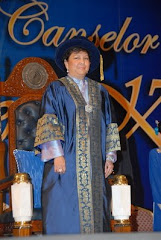LONDON, MON: April 21, 2008
Scientists have created the world’s smallest transistor, measuring a little bigger than a molecule, a feat which they claim could spark the development of super-fast computer chips in the future.
Using the world’s thinnest material called graphene, a team at University of Manchester has produced the transistor which is one atom thick and ten atoms wide, marking the first true electronic nano-component, the Press Trust of India (PTI) quoted the ’Science’ journal, as saying.
Four years ago, they discovered graphene, the first known one-atom-thick material which can be viewed as a plane of atoms pulled out from graphite.
Now, the researchers led by Prof Andre Geim and Kostya Novoselov have shown that it’s possible to carve out nanometre scale transistors from a single graphene crystal. Unlike other known materials, graphene remains highly stable and conductive even when it is cut into devices one nanometre wide.
The smaller the size of the transistors, the better they perform, the Indian news agency quoted the scientists as saying.
Transistors made of graphene start showing advantages at sizes below ten nanometres, the miniaturisation limit at which traditional silicon-based technology is predicted to actually fail.However, Prof Geim does not expect graphene-based circuits to come of age before 2025 but argues this technology will probably be the only way to shrink microelectronics after the silicon era comes to an end.
“It is too early to promise graphene supercomputers. (In fact) in our work, we relied on chance when making such small transistors. Unfortunately, no existing technology allows the cutting of materials with true nanometre precision.“
But this is exactly the same challenge that all post-silicon electronics has to face. At least, we now have a material that can meet such a challenge,” Prof Geim said.
“Now one can think of designer molecules acting as transistors connected into designer computer architecture on the basis of the same material (graphene), and use the same fabrication approch that is currently used by semiconductor industry,” added Novoselov.
Subscribe to:
Post Comments (Atom)








No comments:
Post a Comment